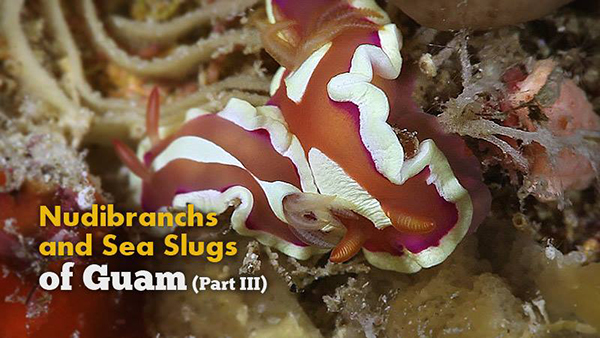Video: Nudibranchs and Sea slugs of Guam part three

Shane Siers presents part 3 of his guide to the nudibranchs and sea slugs of Guam. Featured is this episode is a pair of Noumea varians lying near an egg ribbon. Sagaminopteron bilealbum was first described by our friends Clay Carlson and Patty Jo Hoff; it has only been found in Bile Bay and Agat, and its survival may depend upon protecting Guam’s reef health.
The spots on Chromodoris aspersa may be a method of camouflage, making it appear like a colonial tunicate…I know I’ve almost overlooked them for that reason. The lovely lilac color of the next nudibranch obviously influenced the name of Discodoris lilacina. Haminoeids are herbivorous sea slugs that retain the ancestral shell; this Haminoea sp. appears to be undescribed.
Thurdilla gracilis belongs to a group called “sapsucking slugs” which feed primarily on algae. Some nudibranchs, like Glossodoris hikuerensis, exude a milky toxin when harassed by predators. The small aeolid nudibranch Flabellina bicolor has body projections that can autotomize, or break off without harming the animal, to help protect it from predator attacks. The bizarre Kaloplocamus dokte was a very rare sighting; as far as we know it hasn’t been seen on Guam before (or since). The “precious” Chromodoris preciosa has a variable appearance throughout its broad range.More randomly selected video clips of the diversity of Guam’s nudibranchs and sea slugs.